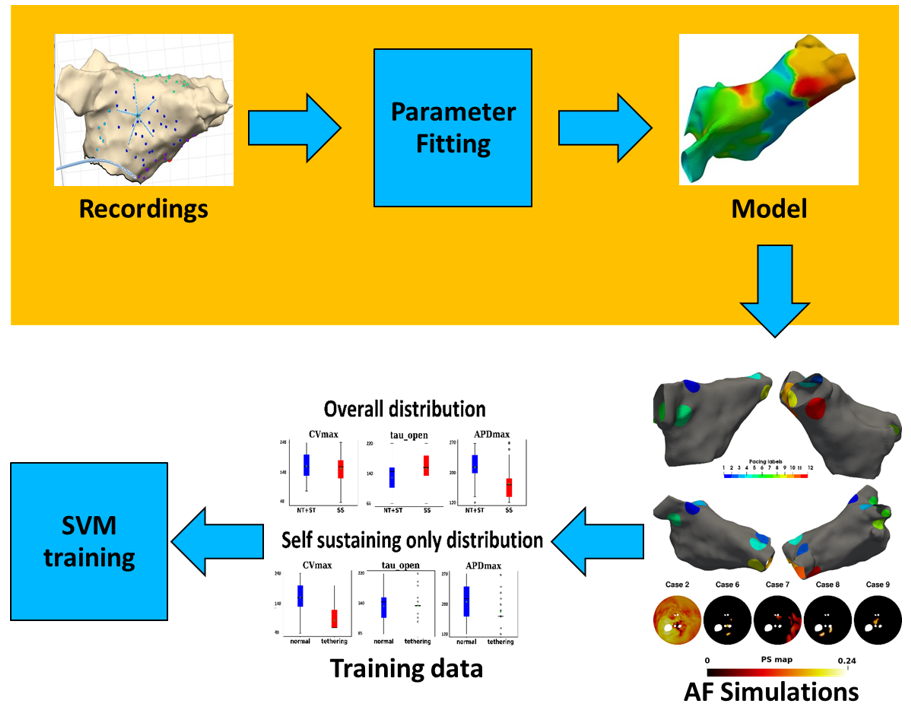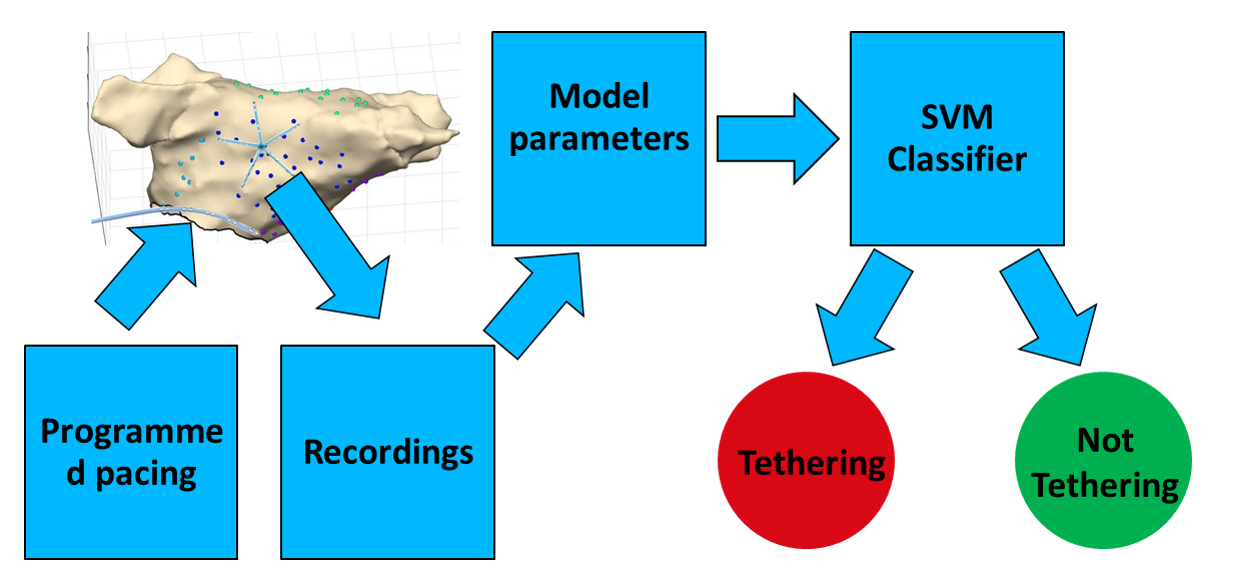Summary: A catheter and a machine-learning based method for identifying portions of the cardiac tissue that sustain arrhythmias during clinical procedures . The identified portions represent possible targets for ablation therapy to correct arrhythmias.
What
A catheter and a machine-learning algorithm for identifying pathological tissues that tethers arrhythmias, and specifically Atrial Fibrillation (AF). The proposed technology integrates data set of numerical simulations of cardiac arrhythmias computed on a cohort of personalised computer models with machine learning classifiers (Figure 1). This allows the identification of potential targets for cardiac tissue ablation during clinical procedures, and specifically during pacing protocols for controlling sinus rhythm, within a sensible time frame, in line with clinical needs (Figure 2).
Why
Atrial Fibrillation is the most common type of arrhythmia, affecting 33.5M people worldwide, 1M people in the UK thereof. Its treatment in the UK alone has an associated cost of £2.2 billion for the public system.
Radiofrequency catheter ablation (RFCA) is the standard of care for drug-refractory atrial fibrillation patients. RFCA strongly depends on the operator’s skill, and its outcomes vary significantly between centres. The success rate of RFCA is between 70% - 80%, meaning that many patients require multiple procedures to restore normal sinus rhythm.
Known solutions to improve RFCA outcomes uses complex fractionated electrograms, focal or re-entrant activation patterns as ablation targets. However, these approaches remain controversial, as they returned inconsistent results.
Further methods for identifying possible ablation targets are based on numerical simulations of AF. However, these methods demand high computational resources and long processing times, making their application difficult within a clinical time scale.
Benefits
The proposed technology can identify ablation targets using limited computational resources and within few seconds.
Furthermore, the technology allows the standardisation of procedures for controlling sinus rhythm, it is independent from the surgical centre, and will produce the same outcome of a skilled clinician.
The technology could improve the success rate of RFCA and reduces/eliminates the number of redo procedures: this reduces the risk for the patient and the costs for the healthcare system.
Opportunity
The technology is protected by a pending PCT application and is available for licensing. Commercial partners are sought for further development and commercialisation.
The Science
The technology uses a machine learning algorithm ,which has been trained with a set of parameters obtained from numerical simulations of AF on a cohort of personalised computational models.
The simulations receive local tissue properties as inputs and return a phase singularity (PS) density map as output, which is correlated to possible tissue ablation regions (Figure 1). The algorithm is then trained based on the same inputs and outputs.
During procedure, a catheter may be configured to measure the cardiac local tissue properties. The algorithm can thus be used for identifying if the tissue in the cardiac region can sustain AF and is a possible ablation target (Figure 2).

Figure 1: pipeline adopted to train tthe machine learning algorithm. The algorithm takes the local tissue properties as the input and inform the clinicians if the tissue sustains arrhythmias.

Figure 2: during clinical procedures, the tissue is stimulated using a programmed pacing protocol; the model parameters that are constrained from the clinical recordings represent the input for the machine learning algorithm.
Patent Status
Pending PCT application
Further Information
Corrado, C. et al. (2021). "Using machine learning to identify local cellular properties that support re-entrant activation in patient-specific models of atrial fibrillation". Europace 23, i12–i20, doi:10.1093/europace/euaa386.